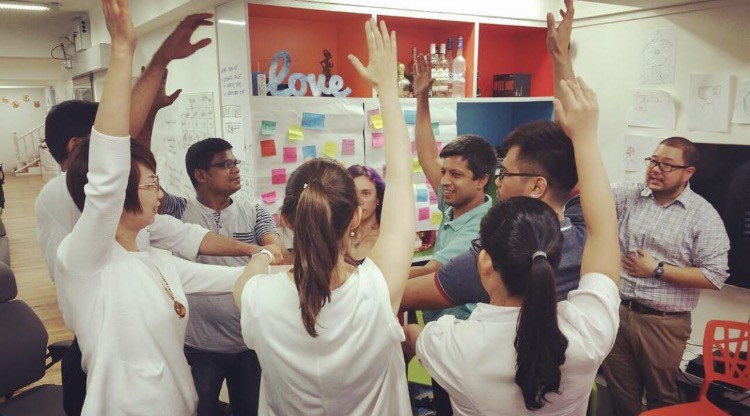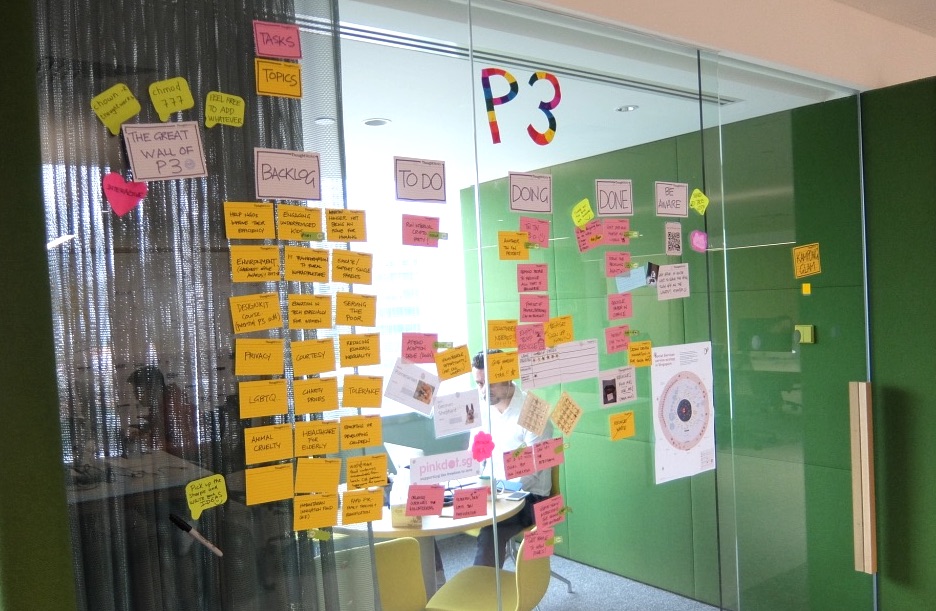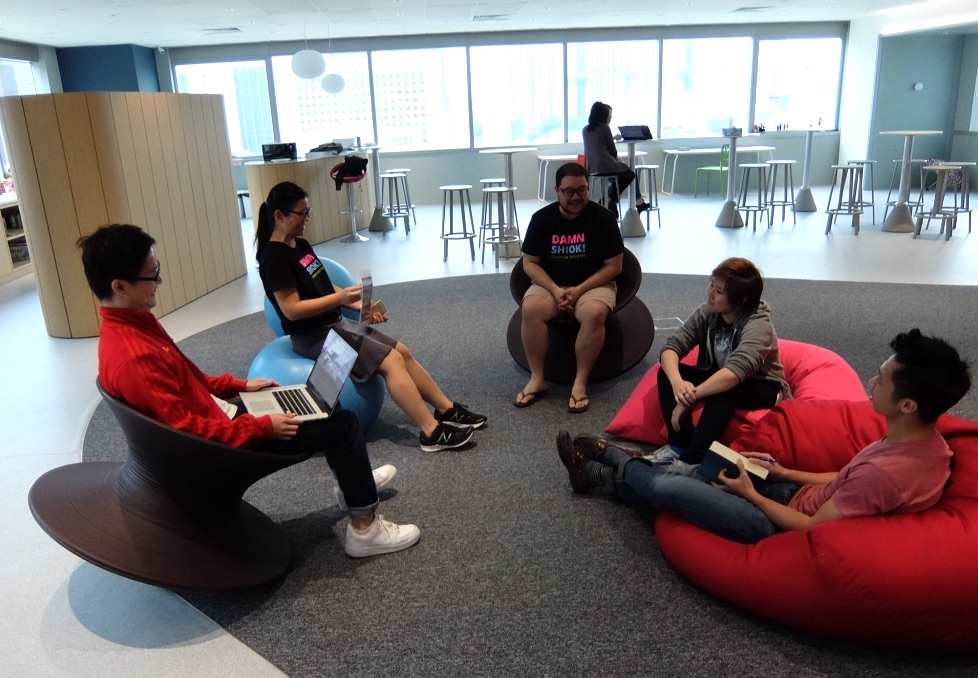
Image credit: ThoughtWorks.
Great tech teams are not born: they’re made. While greatness can be a product of stringent and cut-throat practices, building a talented and happy team can be a pleasant – not painful – process.
It won’t be easy, though. Keeping your tech team motivated isn’t just about throwing in a budget for a monthly dinner. If you want to retain your best and brightest, you’ll need to establish organizational excellence, giving employees opportunities to develop or do different work.
“Employees want interesting work that challenges them. Performing meaningful work gives them a feeling that what they do is important, and provides opportunities for growth so that they feel competent,” says Irene de Pater, an assistant professor at the National University of Singapore (NUS) Business School’s Department of Management and Organization.
Here are five tips on how to build a happy and productive tech team.
1. When hiring, ask potential hires to show, not tell
Nikhita Cyriac, head of recruitment at ThoughtWorks Singapore, believes in asking devs to show, not talk about, their achievements.
Case assessments and tests can help identify an employee’s strengths and weaknesses. This includes showcasing skills beyond coding, such as lateral thinking, logic, and problem-solving.
With gaps identified through assessments, employees in technology consultancy firm ThoughtWorks also attend ThoughtWorks University – a five-week intensive training program to get new hires well-equipped so they can hit the ground running.
2. Don’t build a wall around your tech team.
It’s important to include other key team members in the interview process. A poor culture fit can lead to turnover that costs companies up to 60 percent of the person’s annual salary.
A good fit ensures that engineers and members of different functions can effectively communicate and work with each other. Especially in products requiring complicated engineering, companies may risk critical failure if engineers are not coordinated. For example, in a case by the Harvard Business Review, the A380 “superjumbo” by Airbus overran time and budget constraints due to incompatibilities in the design of the plane’s fuselage. This was discovered late in development. They could have avoided this by using a shared communication platform and compatible computer-aided design (CAD) tools.
To discover whether engineers can work effectively in a team, interviewees at ThoughtWorks practice pair programming. “They pair up with devs in the company and work on a mini-project together. This gives them a better idea of how we really operate in the organization and allows us to observe how they perform in teams,” says Jessie Xia, managing director of ThoughtWorks Singapore.
The paired programmers share a single desktop and review the code together. This allows devs to work together to find the best approach to creating good code.

It’s common for ThoughtWorkers to sit in mixed groups to learn and share. Photo credit: Tech in Asia.
On top of working amongst themselves, shuffling teams through various roles can expose them to other skill sets and increase interest in business decisions. A developer who’s had the chance to interact with a client can build products that meet their needs or better empathize with business developers. This also introduces variety, which makes employees more satisfied, says Professor de Pater.
“A lot of times, in other tech companies, you’re boxed into a role. But our developers don’t just code – they can also choose to develop other skills,” says Anshul Garg, head of professional services at ThoughtWorks. “In ThoughtWorks, developers can be a dev in one project, but a project manager for another. Even if it is a new role, there will always be someone else who can support you in building those skills.”
3. Look out for passionate people
A well-defined organizational culture is just the start. If a new hire isn’t passionate and intrinsically motivated, no amount of training will make him a proactive and invested employee.
It’s the way they speak, express themselves – passion shines through when it’s genuine.
“Intrinsically motivated people perform better, develop themselves on the job, and have high well-being and vitality, which is accompanied by positive emotions and attitudes. They add to a positive atmosphere in the organization,” says Professor de Pater.
A passionate person is typically a self-starter who will drive initiatives, spur creativity and innovation amongst the team, says Nikita. “They will continue to learn and share, actively contributing to not only the organization but the community and industry,” she says.

One of the three pillars of ThoughtWorks is to advocate passionately for social and economic justice. This wall covers actions to be done. Photo credit: Tech in Asia.
4. Feedback can sting, but it shouldn’t hurt too much
Having a culture of honest feedback will encourage employees to contribute thoughts and ideas more fearlessly.
Constructive honesty can be part of the training process. Managers can focus on positive reasons for giving feedback, prepare for the session well, and handle emotional reactions calmly.
The feedback culture is integral to ThoughtWorks. The active encouragement for feedback starts already at onboarding. ThoughtWorks says that this is ingrained in their working culture and is a natural part of conversations between teammates. Moreover, as a flat organization, feedback occurs both informally and formally during reviews.
“If feedback is presented as what is happening, and how we can improve things on both the team and individual level, that would be better,” says Anshul.
For example, instead of telling a new coder that his work isn’t up to the standard, a senior developer would first start a conversation focusing on what the team is trying to achieve — and whether the code being written is the best approach. This way, the feedback is non-aggressive.
Moreover, tech teams should focus on giving 360-feedback. Traditionally, feedback is top-down. “360-feedback” is when supervisors, subordinates, and peers provide staff with constructive advice, allowing an objective and holistic look into a person’s work and relationships in the company. When delivered supportively, 360-feedback can increase self-awareness and improve individual and team effectiveness, studies show. The feedback needs to be translated into intentional action to get new habits, or change existing ones to remain effective.
Both ThoughtWorks and a pool of other research recommend that feedback – not just 360-feedback – should be part of a tech team’s daily working culture. Feedback should never be just a snapshot of a person’s progress.

Hanging out at the ThoughtWorks pantry which doubles as a band practice and virtual reality play area. Photo credit: Tech in Asia.
5. Give people space. Lots of it
Keeping your devs happy isn’t a mystery. Give them space, and let them build stuff.
Being able to invent and innovate without pressure allows employees to see their work as meaningful, and helps them develop closer relationships with others. “Employees want good relationships with their colleagues and superiors so that they feel they have friendships and social support at work,” Professor de Pater says.
ThoughtWorks empowers developers by supporting them in various endeavors. In Singapore, the company has a dedicated Maker’s Group where ThoughtWorkers regularly get together to design, create, and prototype new and exciting innovations. It’s an open group for anyone who has interest to participate, not just devs.
The Botender is one result of the Maker’s Group. Essentially a cocktail machine, the Botender allows you to select and customize your drink using an iPad. In making the bot, the team’s goal was to learn more about electronics.
Over a year, ThoughtWorks supported the Botender team by giving them the freedom to work on the project when they were less busy, as well as by providing funds for them to buy key materials when required.

A ThoughtWorks staff making the cocktail of choice. Photo credit: ThoughtWorks.

The Botender dispensing a cocktail. Photo credit: ThoughtWorks.
“Lean startups don’t need a big budget to create,” says Col, lead consultant at ThoughtWorks.
On top of the Botender, the ThoughtWorks Maker’s Group has also worked together to wire up the office’s front door with a US$9 computer, making it possible to open it from anywhere in the world. The goal? To make life easier for the devs, as devs sat nearest to the door and often had to manually unlock the door for visitors.
The Maker’s group also plans to build voice and facial recognition capabilities to authenticate users in the new ThoughtWorks office. They plan to have some features working as chat bots, and are about to roll out some of the anonymous voice commands such as for booking meeting rooms.
However, Col stresses that informal projects need room for failure without the fear of KPIs to meet. Memorable failures include an out-of-control quadcopter.
“We tried to build a quadcopter,” Col says. “We had set it up incorrectly and couldn’t turn it off in a confined space. We had to use a long pair of pliers.”
“That was fun,” Col grins.
This post Here’s how to build a great tech team appeared first on Tech in Asia.
from Tech in Asia https://www.techinasia.com/build-great-tech-team
via IFTTT
No comments:
Post a Comment